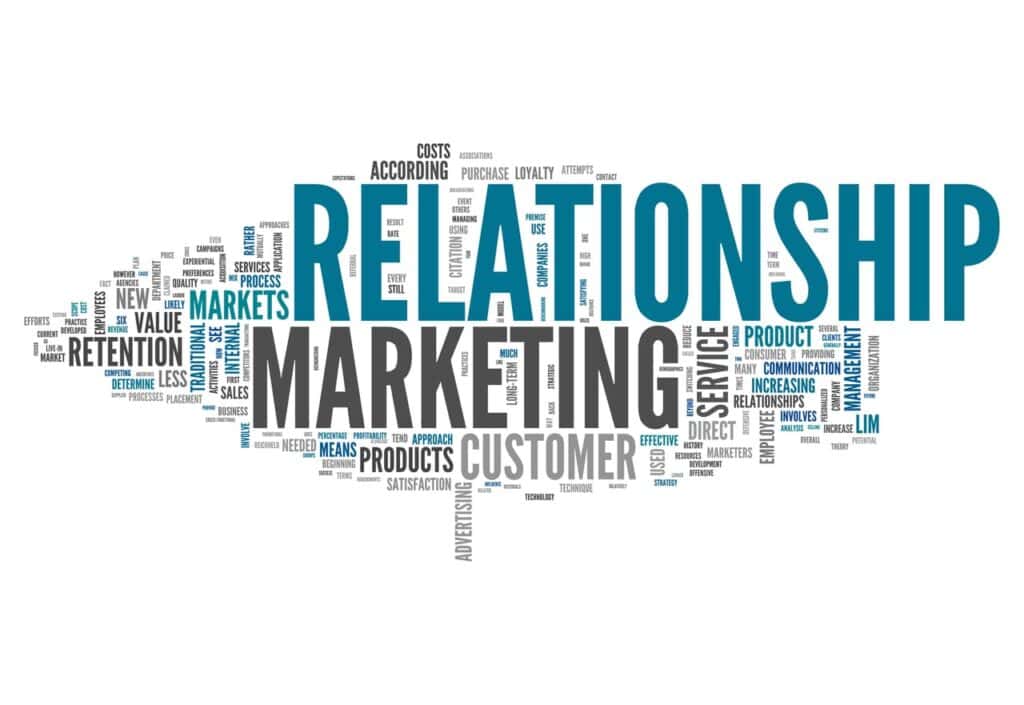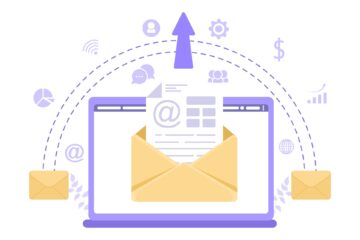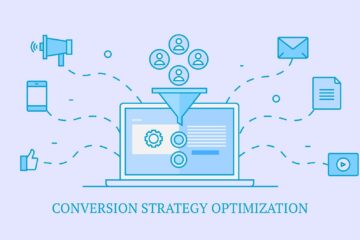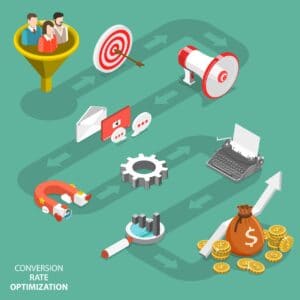Have you ever wondered what truly drives success in field sales? Is it the product? The pitch? Or perhaps the pricing?
Amidst all these components, one factor shines even brighter: creating customer relationships in sales.
In the constantly changing realm of field sales, the connection you establish with your customers forms the foundation of enduring achievement. But how do you cultivate these customer relationships? And why are they so crucial?
Recognizing the Significance of Customer Relationships
In the exhilarating world of field sales, have you ever paused to wonder what truly separates the trailblazers from the rest? Why do some representatives effortlessly climb the ladder of success, while others, despite their best efforts, find themselves stuck in a loop?
The key, my valued reader, is frequently right there before us: the depth, quality, and genuineness of their customer relationships.
Now, envision a scenario. Picture stepping into a store. Would you be more likely to buy from someone you don’t know or from someone who recalls your name, understands your likes, and truly values your requirements? The answer is pretty clear, isn’t it?
This simple analogy underscores a profound truth: in the intricate dance of field sales, genuine customer relationships are the rhythm that guides our steps.
- Trust as the Golden Ticket: In the bustling marketplace of field sales, trust isn’t merely a virtue; it’s the very currency we trade in. Each handshake, every conversation, and every promise kept is a brick in the fortress of trust we build with our customers.
- Beyond the Transaction: True relationship-building transcends the confines of mere transactions. It’s not about how many deals you close; it’s about the bonds you forge in the process.
- Lifelong Partnerships: A sale might last a moment, but a relationship? That’s a lifelong partnership. It’s about being there, rain or shine, celebrating successes and navigating challenges together.
- Repeat Business: Strong customer relationships often translate to repeat business. A satisfied customer is more likely to return, ensuring a steady stream of revenue.
- Word-of-Mouth Marketing: Happy customers become brand ambassadors, spreading the word and amplifying your reach without an extra dime spent on marketing.
- Deep Insights: Building customer relationships means understanding your customers inside out. This insight is invaluable, helping tailor offerings and strategies to perfection.
- Competitive Edge: In a market saturated with similar products, strong customer relationships give you a distinct edge, setting you apart from the competition.
- Reduced Churn: A strong bond with customers means they’re less likely to jump ship, ensuring stability and growth.
- Emotional Connection: Beyond numbers and data, field sales thrive on emotion. A genuine relationship helps in fostering loyalty, commitment, and passion.
- Personal Growth: As you nurture customer relationships, you’re not just growing your business; you’re growing as an individual, honing your interpersonal skills and emotional intelligence.
So, while products, pricing, and strategies are pivotal, it’s the heart-to-heart connections we forge that truly define our success in field sales.
Therefore, when you’re out in the field next time, keep in mind: it’s more than just making a sale; it’s about impacting a life, creating change, and establishing a lasting foundation of trust and collaboration. Because ultimately, it’s these unwavering connections that truly matter.
The Pillars of Building Strong Relationships
It’s not about following a rigid script; it’s about understanding the rhythm, reading between the lines, and dancing in harmony with your customer’s needs. So, what are the pillars that anchor these relationships, ensuring they stand the test of time?
1. Trust
Trust is the unwavering belief in someone’s reliability, truth, and ability. It’s the foundation upon which all meaningful relationships are built.
In field sales, trust is the invisible thread that binds the salesperson to the customer. It’s the silent promise that you’ll always deliver on your word.
Without trust, transactions may occur, but relationships won’t flourish. Trust is the bedrock that helps ensure customers return, recommend, and remain loyal. It’s not just a pillar; it’s the very soil in which fruitful relationships grow.
So, what does it take to ensure your field sales strategies are based on trust? Here’s how.
- Always be transparent in your dealings.
- Own up to mistakes and rectify them promptly.
- Deliver on promises consistently.
- Avoid over-promising and under-delivering.
- Build personal connections, showing genuine interest in the customer.
- Provide honest product or service recommendations.
- Seek feedback and act on it.
- Be available and responsive to customer queries.
2. Communication
Communication involves sharing information, emotions, and thoughts. It’s more than just talking; it’s about forming connections. In field sales, communication serves as the bridge between customer needs and the solutions you provide.
Effective communication fosters understanding, eliminates misunderstandings, and builds rapport. It’s the lifeline that helps keep the relationship vibrant, ensuring both parties are aligned and satisfied.
Here are some tips to ensure your field sales strategies are enhanced with effective and efficient communication.
- Actively listen to your customers.
- Ask open-ended questions to understand needs better.
- Use clear and concise language.
- Avoid jargon that might confuse the customer.
- Use multiple communication channels as per customer preference.
- Be empathetic and understanding in all interactions.
- Tailor your communication style to match the customer’s.
- Always end conversations on a positive note, ensuring clarity.
3. Value Addition
Value addition is about offering more than what’s expected, enhancing the worth and experience of a product or service.
In field sales, value addition is the extra mile you go to ensure customer delight, beyond the basic offering.
Value addition differentiates you from competitors, ensuring customers see and appreciate the unique benefits you bring. It’s the secret sauce that turns satisfied customers into brand evangelists. And to ensure your field sales strategies have value addition to your overall success, check out these techniques.
- Understand the customer’s pain points and offer tailored solutions.
- Provide insights and knowledge that the customer might not be aware of.
- Offer post-sale support and assistance.
- Provide loyalty rewards or discounts for repeat business.
- Organize training or workshops for product usage.
- Stay updated with industry trends to offer the latest solutions.
- Seek feedback to continuously improve the value offered.
- Collaborate with customers to co-create solutions.
4. Consistency
Consistency is the steadfast adherence to the same principles, course, and form in all actions and dealings. In field sales, consistency ensures that the quality of service, communication, and value remains uniform, building a reliable brand image.
Consistency builds and reinforces trust. When customers know what to expect and those expectations are consistently met, loyalty and satisfaction soar.
But what does it take to ensure your field sales strategies are consistent? Here’s how.
- Develop and adhere to standard operating procedures.
- Train and retrain teams to ensure uniform service quality.
- Use CRM systems to track and maintain consistent customer interactions.
- Address and rectify deviations promptly.
- Set clear expectations with customers from the outset.
- Continuously update product knowledge to offer consistent information.
- Ensure consistent pricing and discount structures.
- Regularly review and refine strategies to maintain consistency in the face of market changes.
5. Empathy
Empathy means comprehending and sharing another’s emotions. It’s stepping into their shoes and genuinely understanding their point of view.
In field sales, empathy helps you connect with customers on a deeper emotional level, comprehending their needs, concerns, and dreams.
Empathy fosters genuine connections, making customers feel valued and understood. It’s the bridge that transforms standard interactions into meaningful, lasting relationships.
Be sure to incorporate empathy in your field sales approaches with these strategies.
- Actively listen without interrupting.
- Ask questions to understand the customer’s feelings and needs.
- Avoid being judgmental or dismissive.
- Show genuine concern and interest in the customer’s well-being.
- Tailor solutions based on the customer’s unique situation.
- Validate the customer’s feelings and concerns.
- Offer support beyond just products or services.
- Continuously training in emotional intelligence to enhance empathetic interactions.
6. Adaptability
Adaptability is the ability to change and adjust to new conditions or shifts in the environment.
In the ever-changing world of field sales, adaptability keeps you pertinent by altering your strategies and methods according to evolving customer needs and market dynamics.
An adaptable salesperson can navigate challenges, seize new opportunities, and stay ahead of the curve. It’s the key to staying resilient and thriving in a fluctuating market. And what does it take to ensure adaptable field sales strategies? Check these out.
- Stay updated with industry trends and shifts.
- Be open to feedback and ready to pivot strategies.
- Invest in continuous learning and skill development.
- Embrace technology and tools that enhance adaptability.
- Foster a culture of innovation and experimentation.
- Regularly review and adjust sales processes.
- Engage with diverse customers to gain varied perspectives.
- Collaborate with teams to brainstorm adaptive strategies.

7. Long-Term Vision
Long-term vision is the ability to think beyond the immediate, focusing on future goals, impacts, and possibilities. In field sales, a long-term vision ensures that strategies and relationships are built with sustainability and future growth in mind.
A salesperson with a long-term vision is invested in the customer’s future, ensuring mutual growth and success. It’s about planting trees under whose shade you might never sit but knowing they’ll benefit the relationship in the long run.
Make sure to hold onto a long-term vision when you’re into field sales. Here are some recommendations to accomplish just that.
- Set clear long-term goals and objectives.
- Prioritize relationship-building over quick wins.
- Invest in customer education and growth.
- Develop scalable and sustainable sales processes.
- Foster partnerships and collaborations for mutual growth.
- Engage in strategic planning sessions.
- Continuously assess and align with the company’s long-term vision.
- Focus on value addition that benefits customers in the long run.
Navigating the Intricacies of Relationship Building in Field Sales
In the lively realm of field sales, cultivating customer relationships is like crafting a masterpiece. It’s a journey of ups and downs, moments of joy, and times of reflection.
And much like artists acknowledge, the path to creating a masterpiece is laden with challenges. Yet, these challenges mold, improve, and ultimately characterize the masterpiece.
A. Adapting to the Winds of Change
The field sales arena is a dynamic one, constantly in flux. Today’s hot-selling product might become tomorrow’s relic. Customer preferences once thought to be set in stone, can shift like desert sands.
Market conditions, shaped by various factors, can swiftly shift. In this context, flexibility becomes essential.
But what does adaptability truly mean? It’s more than just responding to change; it’s about foreseeing it, embracing it, and, above all, evolving with it. It’s about realizing that the customer relationship you’ve nurtured isn’t unchanging. As they evolve, so should the relationship.
It’s a dance, where both partners move in harmony, adjusting their steps to the rhythm of the music. And the music, in this case, is the ever-changing field sales environment.
Remember the tale of the mighty oak and the flexible reed? In a storm, the rigid oak breaks, while the reed bends and survives. In field sales, adaptability is that flexibility, allowing you to weather storms and emerge stronger.
B. Turning Difficult Conversations into Golden Opportunities
Every field sales representative has tales to tell. But here’s a perspective shift: what if these challenging interactions are not obstacles but opportunities? Opportunities to demonstrate patience, understanding, and unparalleled problem-solving skills.
Every difficult conversation is a mirror, reflecting areas of potential growth. Maybe it’s a product flaw, a gap in communication, or perhaps a mismatched expectation. By addressing these head-on, not only do you resolve the immediate concern, but you also pave the way for stronger, more resilient customer relationships.
Think of it as strengthening steel; the journey could be demanding, but the outcome is an unparalleled blade, strong and razor-sharp.
So, when you encounter a tough customer situation, just pause, put on your problem-solving mindset, and plunge in. Remember, diamonds are formed under pressure.
C. The Delicate Balance of Quantity and Quality
In the exhilarating race of field sales, numbers often take center stage. There’s an undeniable thrill in expanding one’s customer base, watching those figures climb. But here’s a thought-provoking question: what’s the purpose of numerous acquaintances if none develop into profound, significant customer relationships?
Choosing quality over quantity is an enduring mantra, and for good reason. A handful of strong, trust-based relationships can yield more value than numerous superficial interactions.
These are the relationships that lead to repeat business, glowing referrals, and unwavering loyalty.
It’s essential to strike a balance. While expanding your customer base is crucial, it should never come at the cost of the relationship quality. It’s like tending to a garden; while sowing new seeds is vital, it’s equally important to nurture the existing plants, ensuring they bloom in all their glory.
Leveraging Technology to Enhance Relationships
In today’s digital age, technology isn’t just a tool; it’s an ally. From CRM systems that track customer interactions to AI-driven insights that predict future behavior, technology can supercharge your relationship-building efforts.
- CRM Systems: Think of them as your personal relationship assistant. They track interactions, preferences, and even potential opportunities. But always keep in mind, a tool is effective based on the person using it.
- AI and Machine Learning: Foreseeing customer actions might seem like something out of science fiction, but thanks to AI, it’s now a reality. By understanding patterns and preferences, you can tailor your approach for maximum impact.
- Social Media Platforms: These are potent tools for connecting with customers, comprehending their likes, and promptly addressing their issues. Through active involvement in meaningful discussions and sharing valuable content, you can nurture stronger bonds and remain memorable.
- Chatbots and Virtual Assistants: These digital helpers are revolutionizing customer service. Available 24/7, they can answer queries, provide product information, and even assist in the purchasing process. More than just digital entities, they’re customer relationship builders, ensuring customers always have a touchpoint.
- Augmented and Virtual Reality (AR & VR): Imagine showcasing a product to a customer without them having to step into a store, or giving them a virtual tour of a property from the comfort of their home. AR and VR are not just futuristic concepts; they’re here, transforming the way we engage with customers, offering immersive experiences, and deepening the bond.
Harnessing the power of technology is no longer optional; it’s imperative. In the realm of field sales, where customer relationships are the currency, leveraging these technological marvels can be the difference between a fleeting transaction and a lifelong connection.
Embrace them, master them, and let them amplify your relationship-building prowess.
Final Thoughts | Building Genuine Relationships in Field Sales
In the dynamic world of field sales, the most radiant aspect is the threads of authentic customer relationships. These threads are the life force, the pulse, the very core of triumph in this domain.
Each handshake, every chat, and each solution given is a tribute to this special connection.
However, in our ever-changing digital era, tools like Beest are your partners, enhancing your endeavors and ensuring you stay at the forefront. So, as you embark on the journey of creating unwavering bonds, invest in smart and innovative field sales management software to be your dependable ally, streamlining processes and giving a boost to your customer relationship-building efforts.
Delve in deeply, connect sincerely, and let each interaction showcase the essence of field sales success.
Are you prepared to elevate your field sales prowess? Give Beest.app a try today and witness the remarkable transformation!























